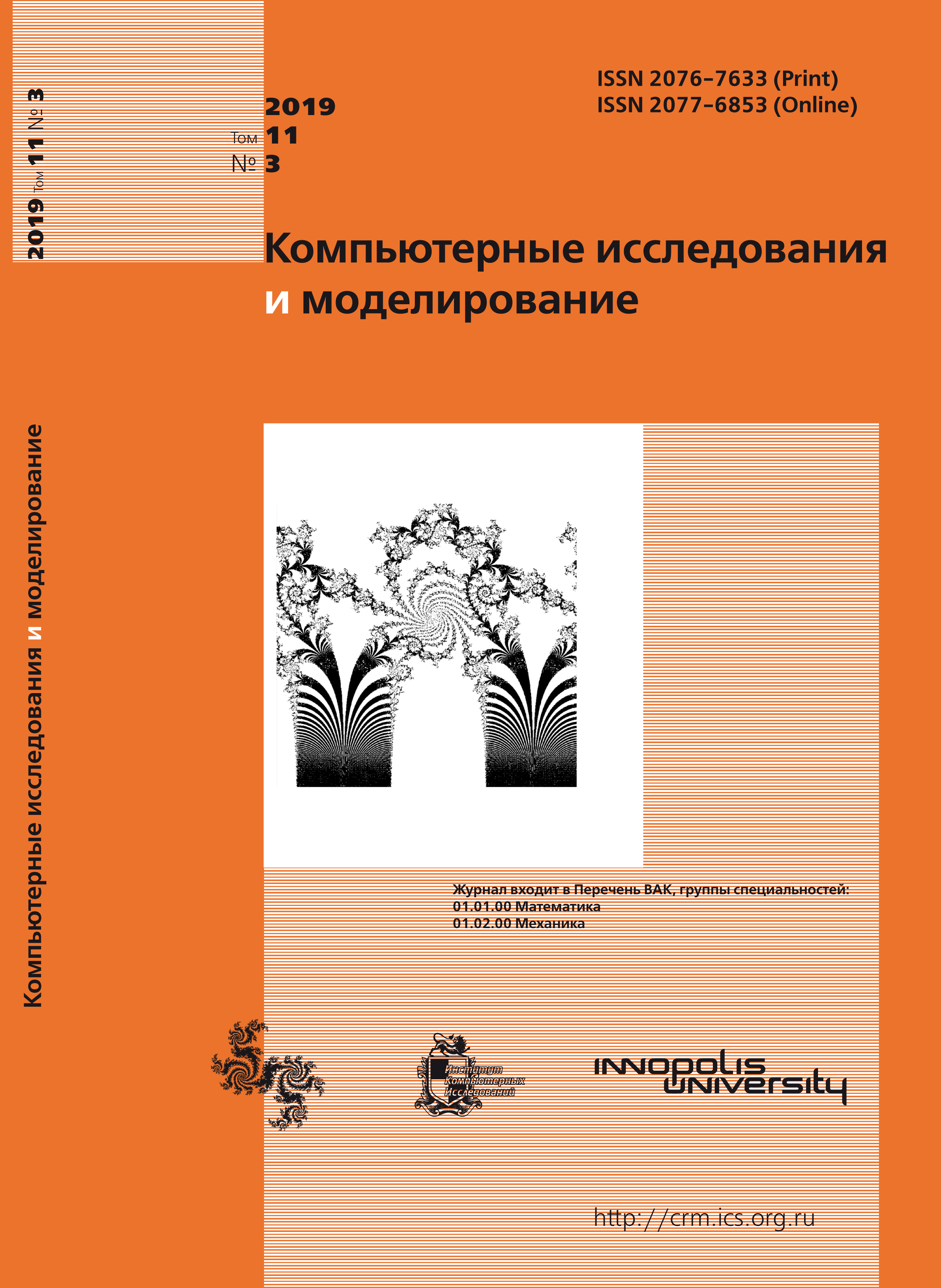All issues
- 2024 Vol. 16
- Issue 1 (special issue)
- 2023 Vol. 15
- 2022 Vol. 14
- 2021 Vol. 13
- 2020 Vol. 12
- 2019 Vol. 11
- 2018 Vol. 10
- 2017 Vol. 9
- 2016 Vol. 8
- 2015 Vol. 7
- 2014 Vol. 6
- 2013 Vol. 5
- 2012 Vol. 4
- 2011 Vol. 3
- 2010 Vol. 2
- 2009 Vol. 1
Investigation of Turing structures formation under the influence of wave instability
A classical for nonlinear dynamics model, Brusselator, is considered, being augmented by addition of a third variable, which plays the role of a fast-diffusing inhibitor. The model is investigated in one-dimensional case in the parametric domain, where two types of diffusive instabilities of system’s homogeneous stationary state are manifested: wave instability, which leads to spontaneous formation of autowaves, and Turing instability, which leads to spontaneous formation of stationary dissipative structures, or Turing structures. It is shown that, due to the subcritical nature of Turing bifurcation, the interaction of two instabilities in this system results in spontaneous formation of stationary dissipative structures already before the passage of Turing bifurcation. In response to different perturbations of spatially uniform stationary state, different stable regimes are manifested in the vicinity of the double bifurcation point in the parametric region under study: both pure regimes, which consist of either stationary or autowave dissipative structures; and mixed regimes, in which different modes dominate in different areas of the computational space. In the considered region of the parametric space, the system is multistable and exhibits high sensitivity to initial noise conditions, which leads to blurring of the boundaries between qualitatively different regimes in the parametric region. At that, even in the area of dominance of mixed modes with prevalence of Turing structures, the establishment of a pure autowave regime has significant probability. In the case of stable mixed regimes, a sufficiently strong local perturbation in the area of the computational space, where autowave mode is manifested, can initiate local formation of new stationary dissipative structures. Local perturbation of the stationary homogeneous state in the parametric region under investidation leads to a qualitatively similar map of established modes, the zone of dominance of pure autowave regimes being expanded with the increase of local perturbation amplitude. In two-dimensional case, mixed regimes turn out to be only transient — upon the appearance of localized Turing structures under the influence of wave regime, they eventually occupy all available space.
Indexed in Scopus
Full-text version of the journal is also available on the web site of the scientific electronic library eLIBRARY.RU
The journal is included in the Russian Science Citation Index
The journal is included in the RSCI
International Interdisciplinary Conference "Mathematics. Computing. Education"







